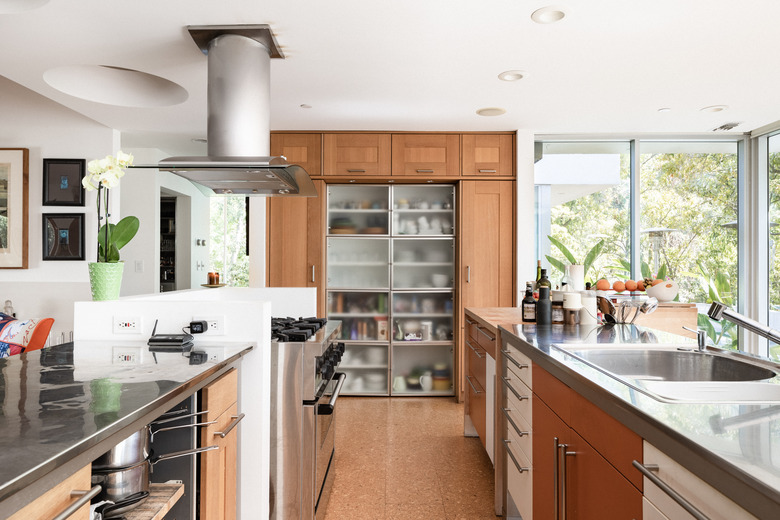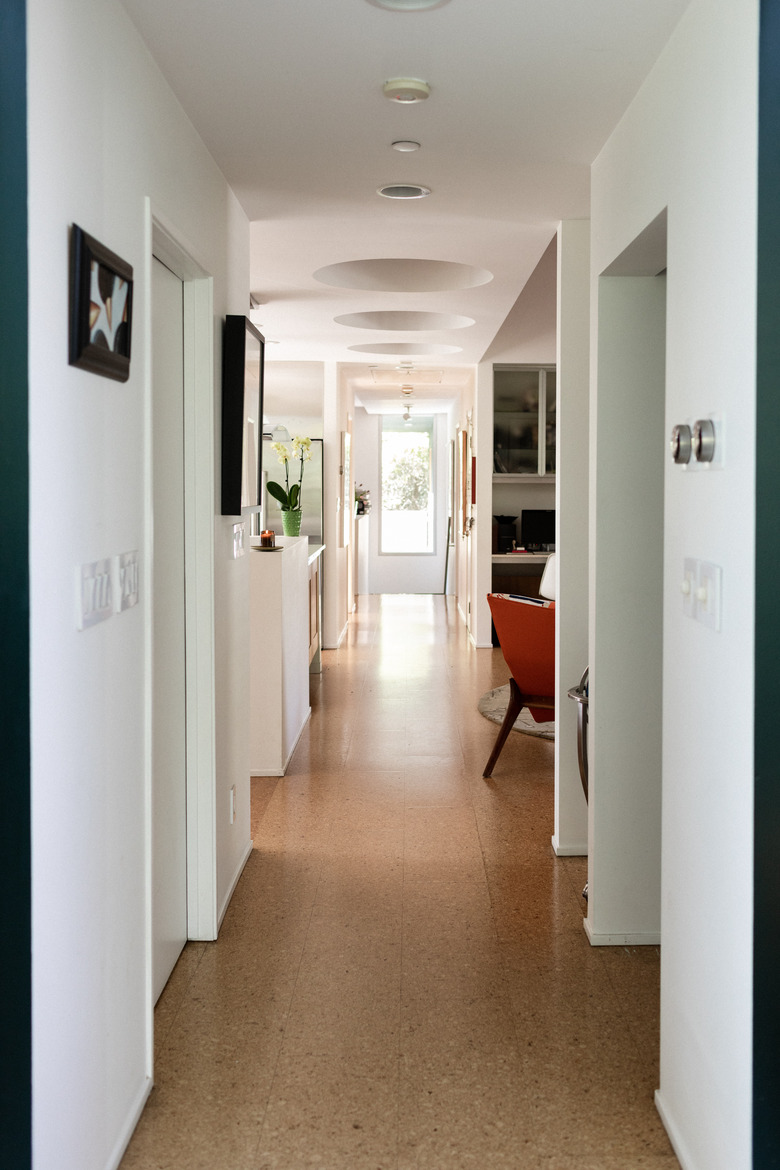Cork Kitchen Flooring: What You Need To Know
Now more than ever, homeowners seek out sustainable and environmentally friendly materials when constructing or remodeling their homes. Kitchen flooring is no exception, which explains why cork flooring has become such a popular choice for many homeowners.
Harvesting cork does not involve not involve cutting down trees; instead it comes from the tree bark, which enables the tree to continue to live. Plus, it is harvested by hand rather than machines relying on fuel.
Not only is cork flooring sustainable and eco-friendly, but it also is durable, easy to clean and resistant to mold, mildew and insects. In addition, it is hypoallergenic, making it an ideal choice for those dealing with allergies.
As a result, homeowners with cork flooring in their kitchens can enjoy beautiful floors that hold up well to daily use, are great for both their local and the world's environments, and will hold their value.
Get to Know Cork
Get to Know Cork
Unlike other sustainable and renewable flooring products, cork is a wood product that does no harm to the tree. While the flooring material comes from the cork oak tree, it doesn't result from cutting down the tree. Instead, cork is harvested by removing the bark of the tree, allowing the tree to continue growing. In fact, the bark of the cork oak tree will regrow and can be harvested again in nine to 11 years. In addition, cork oak trees must reach at least 20 years of age before they can be harvested.
When crafting cork kitchen flooring, consumers can choose from either natural cork parquet tile or natural cork plank. Standard parquet tile size is a 12 x 12-inch square or a 12 x 24-inch rectangle. Planks are long panels that utilize a floating floor installation. This allows homeowners to choose a product that fits their design needs for their home.
Pros and Cons of Cork
Pros and Cons of Cork
Like all flooring products, there are advantages and disadvantages to choosing cork flooring for your kitchen. Obviously, cork is a natural, renewable resource. Due to its natural qualities, cork flooring is also a warm, comfortable material, not unlike carpet — although they obviously feel quite different to walk on — which means it's a great insulator for both temperature and noise. Those natural characteristics also make it resistant to mold, mildew and insects, something especially important for those who seek hypoallergenic kitchen flooring. It's even naturally resistant to fire.
In addition, cork is durable; however, that durability comes with some flaws. For instance, because of cork's resiliency — meaning it will "bounce back" when pressure is removed, such as walking across the floor — continued pressure, like that of a longstanding kitchen table, can result in a dent in the floor when said table is removed. For this same reason, cork flooring is not the most pet-friendly kitchen flooring, as repeated scratching by dogs and cats could damage the cork's resiliency.
Cork flooring's natural coloring provides a lovely hue, so homeowners can choose to have a finished or unfinished flooring product to take advantage of that natural coloring. However, because it is a natural product, that coloring will mellow and fade over time, particularly if it's subjected to regular, direct sunlight. As such, it should be protected from direct sunlight to maintain its natural hue for as long as possible.
On the other hand, cork flooring can be painted or stained, allowing homeowners to customize the look according to their kitchen design. It is also available in numerous patterns, offering further opportunities to create a custom look.
Factoring the Cost of Cork
Factoring the Cost of Cork
Compared to other common flooring products such as carpet, tile or hardwoods, cork flooring can have a higher price point. Not only does this apply to the flooring material itself but also to installation. While cork can be installed by DIY enthusiasts, it may be better to hire an experienced installer to ensure it suffers no damage during the process.
Even though cork is resilient and will bounce back with normal use, if you are not well-versed in working with this flooring material, you could inflict irreparable damage to the cork during installation. By contracting with a flooring professional who has experience installing cork, you are more likely to have the beautiful floors you want.
Cork Floor Installation Tips
Cork Floor Installation Tips
In simple terms, installing cork tiles entails gluing the tiles to a level subfloor, while installing cork planks involves clicking the planks together and laying them over a subfloor or even an existing floor. For some homeowners, installing cork floors can be a simple process, but it can be tricky for others.
As such, DIY homeowners should carefully consider whether they are confident in their home improvement skills before taking on this task. If not, you may want to hire an experienced installer to complete the job.
In addition, to ensure you end up with the sustainable, eco-friendly and hypoallergenic floor you want, discuss with your installer (or material supplier if going the DIY route) all the adhesives and sealers that will be used in the project. You may discover these products are not as eco-friendly as the flooring material, or they may contain ingredients that trigger or irritate existing allergies within your family.
Caring for Cork Floors
Caring for Cork Floors
While cork is durable, regular maintenance and upkeep should be performed to optimize the flooring and prolong its life. This includes sweeping to remove dirt and trash that could scratch the surface as well as mopping to prevent buildup of dirt, cleaners or food particles. In addition, it's important to clean up spills immediately so the cork does not absorb those liquids.
Also, because cork does give way to heavy pressure, you should move your furniture, such as the kitchen table and chairs, on a regular basis to prevent permanent indentations in the flooring. Using a floor mat in front of the kitchen sink also can help prevent these indentations.
Cork can be an eco-friendly yet fashionable flooring choice, as well as a budget-friendly option for many homeowners. However, it's important to research all of your options before making a decision to ensure you have a floor you can enjoy for many years to come.
Comparing Cork Flooring Brands
Comparing Cork Flooring Brands
While there are many flooring manufacturers offering cork flooring, some of the most popular brands include USFloors, WE Cork, APC Cork, ICork Floor and AmCork.
Based in Dalton, Georgia, USFloors completes all milling and finishing work of its cork flooring in the United States. Its flooring products come in both tile and planks with 30 color options. The company also offers a lifetime warranty on all residential applications of its flooring.
Working with natural cork since 1868, WE Cork started out making cork stoppers before moving on to cork floors. The company offers three lines of tiles and planks, which provide many options for consumers. It is sold through distributors and flooring showroom storefronts.
A major supplier of cork floors in North America, APC Cork offers tiles in various sizes and colors in both glue-down and floating styles. While samples are available for $5 per sample, the company is well known for overall affordability and great customer service.
ICork Floor will sell direct to consumers and has a reputation for being a budget-friendly option. Homeowners can even order free samples right on the company website.
Offering both tiles and planks, AmCork is also touted as an affordable option for U.S. consumers looking to buy cork flooring. In fact, consumers can find some real deals on the company website and by signing up for the company mailing list.


